Persimmon trees add beauty and flavor to any garden. They come from around the world and are loved for their hardiness and health benefits. Growing these trees is a rewarding experience.
These trees stand out with their vibrant fall colors and ability to grow in many climates. They are perfect for those who love gardening, cooking, or just want a healthy snack.
Table of Contents
Understanding Different Persimmon Varieties for Your Garden
Gardeners have a variety of persimmon species to choose from, each with distinct flavors and growing needs.
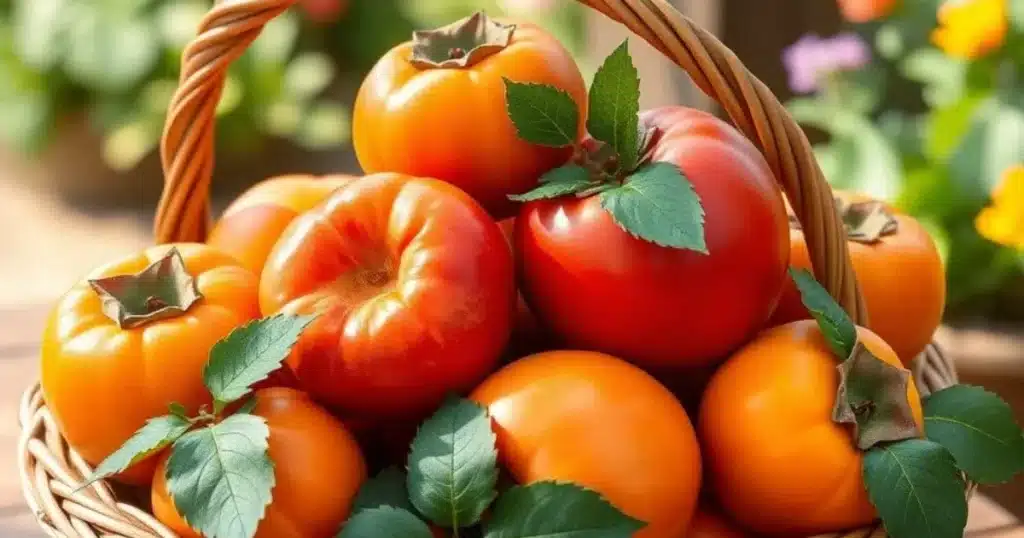
Asian Persimmons (Diospyros kaki)
Renowned for their sweet taste and vibrant orange color, Asian persimmons thrive in USDA Hardiness Zones 7–10 and can reach heights of 25–30 feet. Popular cultivars include:
- Fuyu: A non-astringent variety with a crisp, sweet texture.
- Hachiya: A heart-shaped cultivar that becomes soft and jelly-like when fully ripe.
American Persimmons (Diospyros virginiana)
Ideal for colder climates, American persimmons flourish in Zones 4–9 and offer a tart, spicy flavor. Popular cultivars include:
- Meader: Known for its cold hardiness and delicious, spicy-sweet fruit.
- Garrettson: Celebrated for its heavy yields and rich flavor.
Essential Growing Requirements
Growing fruit trees successfully requires careful consideration of soil, sunlight, and water. Understanding their needs is essential for successful growth.
Soil Conditions
Soils should be well drained and slightly acidic. The pH should be between 6.0 and 7.5. They can grow in many soils, as long as it drains well.
Incorporating compost or aged manure into the soil enhances its fertility and improves water drainage.
Sunlight Requirements
these trees need lots of sunlight. They should get at least 6 to 8 hours of direct sun each day. Choose a spot that gets plenty of sunlight for the best growth and fruit.
Watering Needs
Keeping the soil moist is important for these trees. This is especially true when they’re young or during hot, dry weather. Provide them with deep watering, aiming for about 1 to 2 inches per week.
Adjust how much you water based on the weather and how wet the soil is.
Health Benefits and Nutritional Value
Persimmons are not just a tasty fruit. They also have a lot of nutrients and health benefits. Let’s look at why they’re a great choice for your diet.
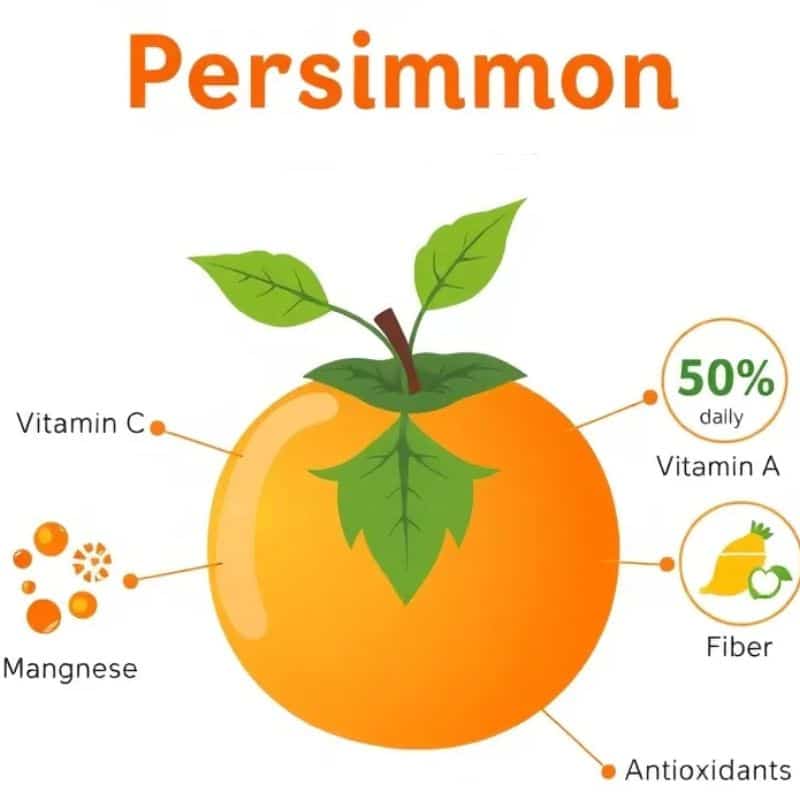
Vitamin and Mineral Content
Persimmons are packed with vitamins and minerals. One medium fruit gives you over 50% of your daily Vitamin C. They also have Vitamin A, and manganese.
Antioxidant Properties
these tasty fruits are full of antioxidants. These fight off harmful free radicals in your body. They have polyphenols, carotenoids, and flavonoids. These help your immune system and lower disease risk.
Digestive Health Benefits
these fruits are high in dietary fiber. This is good for your digestive system. It helps with bowel movements and prevents constipation. The fruit also has tannins, which may soothe your digestive tract.
| Nutrient | Amount per Medium Fruit |
|---|---|
| Calories | 118 |
| Carbohydrates | 31g |
| Fiber | 6g |
| Vitamin C | 55mg |
| Vitamin A | 855 IU |
| Manganese | 0.2mg |
How to Plant and Care for Your Persimmon Tree?
Planting and caring this tree can be very rewarding for you . It gives you a lot of delicious fruit.
Planting :
- Dig a hole twice as wide and just as deep as the root ball.
- Remove the tree from its container and place it in the hole, making sure the root ball is level.
- Fill the hole with the original soil, avoiding burying the trunk too deep.
- Water the tree well to settle the soil and remove air pockets.
Pruning and Maintaining :
Proper pruning is essential for maintaining tree health and ensuring good productivity. Begin by removing damaged or crossing branches, then thin out the interior to enhance air circulation and sunlight penetration.
Prune in late winter or early spring before new growth appears.
To support growth, apply a balanced, slow-release fertilizer in early spring. Regular watering is also crucial, particularly during dry spells, to keep the soil evenly moist but not waterlogged.
“Persimmon trees are relatively low-maintenance once established, but proper planting, pruning, and care are key to a bountiful harvest.” – Gardening Expert, Jane Doe
Harvesting and Ripening
Getting the timing right for harvesting and ripening is key. Knowing when to pick them and how to ripen them is crucial—it makes all the difference in enjoying this unique fruit.
When to Pick Your Fruit
Timing is everything when it comes to harvesting persimmons. For the best taste, pick when they’re deep orange or red and slightly soft. Don’t pick hard or pale ones, as they won’t taste good.
Proper Storage Methods
- After harvesting, handle the fruit gently to avoid bruising.
- Store ripe fruits in the refrigerator, where they can last up to two weeks.
- Unripe fruits can be left at room temperature to ripen.
- For long-term storage, fruits can be frozen, dried, or turned into preserves.
Ripening Techniques
If your persimmons aren’t ripe, you can speed up the process with a few tricks:
- Place unripe fruit in a paper bag or cardboard box with a ripe apple or banana. The ethylene gas from the ripe fruit will speed up the ripening process.
- For a faster method, you can also microwave unripe fruit for 10-15 seconds to soften the flesh.
- Once softened, they’re ready to enjoy fresh or in your favorite recipes.
Ethylene plays a key role in fruit ripening, influencing texture, color, and flavor. Learn more about its effects in this University of Maryland article.
Common Pests and Diseases
Persimmon trees are a joy to have, but they can face pests and diseases. These issues can harm their health and fruit. Knowing about these problems helps keep your trees healthy and fruitful.
Pests :
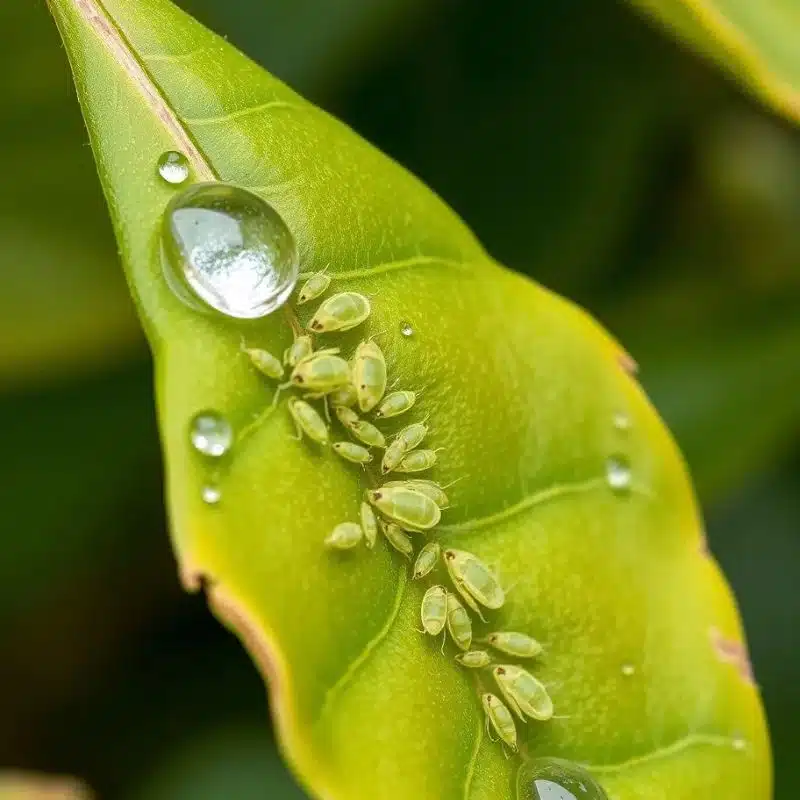
The persimmon borer is a major pest. These larvae harm the tree’s trunk and branches. Proper pruning and monitoring can help control borers.
Aphids also bother persimmon trees. They suck sap from leaves and new growth. This can stunt the tree’s growth and make it sick. Regular spraying with insecticidal soap or neem oil can effectively manage aphid populations.
Diseases :
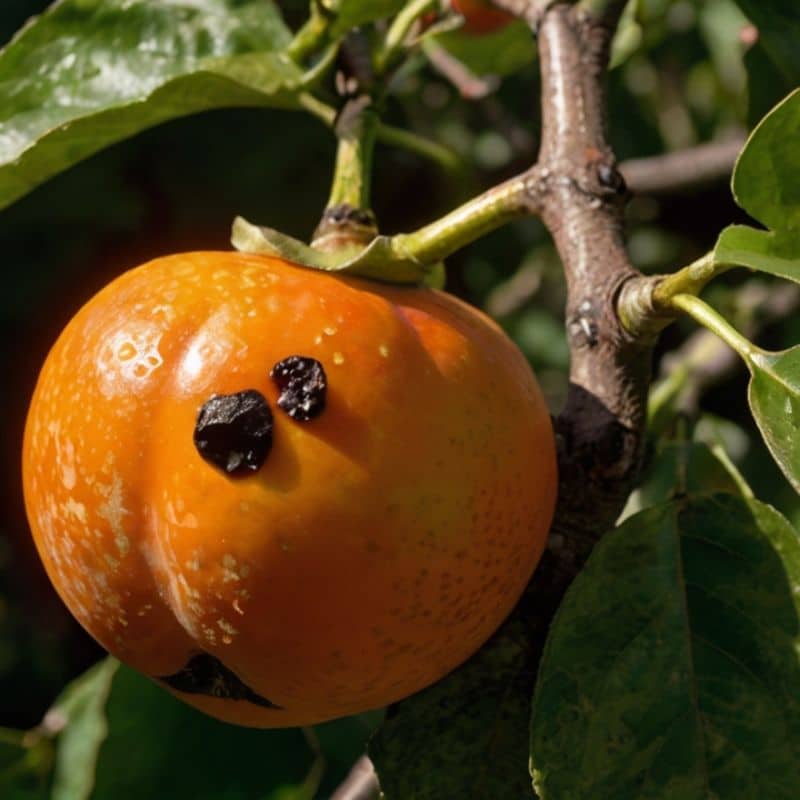
Persimmon Wilt: A fungal disease that causes wilting, yellowing, and dieback of branches. Proper drainage and air circulation can help prevent this disease.
Black Spot: A fungal disease that produces dark spots on the fruit, compromising its appearance and quality. Fungicide treatments and pruning affected areas can control black spot.
Anthracnose: This fungal disease causes discoloration and premature fruit drop. Maintaining good air flow around the tree and applying fungicides can help mitigate anthracnose.
Culinary Uses and Recipe Ideas
Persimmons are a versatile fruit that can be enjoyed in many ways. They are perfect for eating fresh, baking, and preserving. This unique fruit offers a world of delicious possibilities for home cooks and bakers.
Fresh Eating Tips
For fresh persimmons, wait until they are fully ripe. Enjoy them as a sweet, creamy snack. Or add them to salads, smoothies, and even savory dishes. Slice, dice, or eat them whole—the choice is yours!
Baking
Persimmons are great in baked goods because they add a natural sweetness and texture. Try them in cakes, pies, tarts, and cookies. For a classic treat, make persimmon bread or muffins. The possibilities are endless.
Preservation Methods
Make delicious recipes with this succulent fruit like jams, preserves and chutneys to enjoy all year long.
Dry them for a concentrated, mellow flavor, perfect for snacking or trail mixes.
Freeze them as a puree to later prepare them in smoothies, sauces and baked goods.
Landscaping Benefits and Ornamental Value
Trees like persimmons and crabapples add vibrant color and visual appeal to any landscape. Their striking shapes and vibrant fall colors can make any outdoor area stunning.
This tree is a great choice for its beauty. Its spreading forms and green leaves are eye-catching. In autumn, the leaves turn into a mix of golden yellow, orange, and red.
These trees beauty doesn’t stop in summer. Even without leaves, its branches are interesting. The tree’s bark, smooth and grey-brown, adds to its appeal all year.
These trees are also great for adding fruit to your garden. The colorful persimmons hanging from the branches add charm and whimsy.
Growing Persimmon Trees in Different Climate Zones
Understanding the climate needs of different persimmon trees is essential. Whether you live in a temperate, subtropical, or harsh climate, there is a persimmon tree for your garden.
In cooler regions, the hardiness of this tree is very important. The American persimmon (Diospyros virginiana) can withstand -25°F (-32°C), making it ideal for cold areas. On the other hand, Asian persimmons (Diospyros kaki) need a milder climate and can be sensitive to frost, requiring protection in cold areas.
In subtropical or tropical climates, tropical persimmon varieties like Fuyu and Hachiya are ideal. They tolerate high temperatures and humidity well. They like mild winters and hot, humid summers.
Conclusion
Persimmon trees provide many benefits, such as beautiful leaves and tasty fruits. They can enhance your garden. Plus, they are good for your health.
Are you ready to grow persimmon trees at home? These trees can grow well in many places. They give you delicious fruits and add beauty to your garden. These trees are special and offer many rewards.
FAQ
How do Asian and American persimmon varieties differ?
Asian varieties are larger and sweeter, with a soft texture. American varieties are smaller and more tart, making them better suited for colder climates.
What are the health benefits of consuming persimmons?
These fruits are rich in vitamins and antioxidants, supporting immune and skin health. Eating them can also help prevent certain diseases.
How do I properly plant and care for a persimmon tree?
Plant the tree in a sunny location with good soil. Regular pruning, fertilizing, and watering are essential. Keep an eye out for pests and diseases to maintain its health.
How do I know when to harvest and ripen persimmons?
Harvest when the fruit is fully orange or reddish and slightly soft. For unripe fruit, store it at room temperature or in a paper bag to ripen.
What are some common pests and diseases that affect persimmon trees?
Pests like mites and diseases such as black spot can affect theses trees. Ensuring good air circulation and promptly removing diseased leaves can help combat these issues.
How can I use persimmons in cooking and baking?
These fruits can be used in a variety of dishes. Enjoy them fresh, in baked goods, as a meat topping, in salads, or as a glaze.

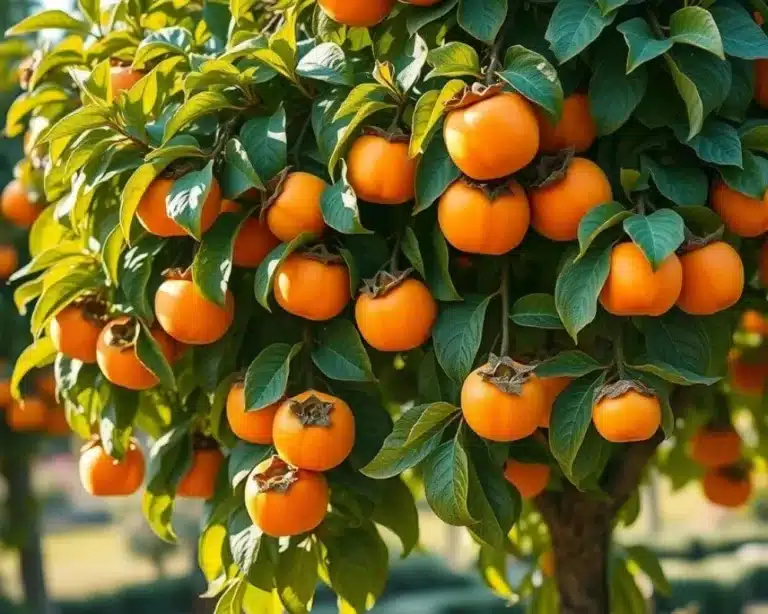
3 thoughts on “Persimmon Tree: 7 Amazing Reasons to Grow This Fruit”